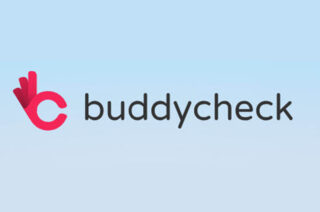Staff Guidance: Peer Assessment Tools

Below you will find guidance to help you prepare and design your peer assessment activity.
Preparing and designing your peer assessment
- Peer Scoring or Peer Review?
- Tools
- Preparation
- Set-up Guides: BuddyCheck, Turnitin PeerMark and Peer Scholar
Peer Scoring or Peer Review?
In a peer scoring task individuals score the work of their peers. Peer scoring is typically used to identify and recognise differing contributions from peers who have worked together on a group project.
Peer review aims to prompt students to reflect on their practice, encouraging self-awareness and personal development. In this approach, peers are used in a more supportive capacity. Their role is to offer feedback, to develop their constructive criticism and communication skills by providing their perspective on the reviewee’s strengths, as well as to deepen their understanding of the learning objectives and reflect collectively on improving both individual and group practice.
Tools
We currently have three peer assessment tools integrated with Blackboard:
- Buddycheck – a peer scoring tool

Group members, who have completed and submitted a piece of group work, review and score each member based on categories from the CATME framework. Results can then be used to identify issues in group dynamics including non-contributing members, and the software can also be used to adjust individual scores in the grade centre.
- Turnitin PeerMark – a peer review tool
Turnitin PeerMark focuses on peer feedback. The addition of a PeerMark assignment within Turnitin allows staff to allocate submissions to another student for peer review. Therefore, students will receive both instructor feedback and peer feedback, from a single assignment submission.
- Peer Scholar – a tool which combines peer review and peer scoring
Peer Scholar is currently the only tool available in Blackboard which will allow students to submit work as a group or as individuals, and follow a peer assessment process which includes peer evaluation (qualitative feedback) and peer scoring.
Preparation
Successful peer evaluations require a shared understanding of the value of the evaluation process. It is important to explain the reasoning behind peer assessment to your students . For example, what a student and their peers will gain from the process; what is expected of them both as a member of the group and/or as an ‘assessor’ of their peers; and how to assess each other in a constructive and objective manner.
Preparation and clear assessment criteria are essential to supporting effective peer assessment. Before getting started with any tool, we have identified a few areas that need consideration:
- What are the objectives of the peer assessment in relation to the skills/learning outcomes of the unit/module? An example of learning outcomes for a peer assessment task could include:
- LO1 – The ability to demonstrate reflective, analytical and critical thinking: How well does the text tell you what the person learned from analysing or thinking critically and reflectively about their experiences?
- LO2 – The ability to demonstrate planned and purposeful development: Is it clear that the person has taken specific steps to try to improve their chosen skills and their impact, and sought opportunities to improve, rather than simply waiting for opportunities to come to them?
- Do you need a quantitative or qualitative assessment, or a mix of both, to achieve the above objectives?
- Will the assessment/s will be formative or summative?
- Will the assessment/s be anonymous?
- Will students provide feedback on the usefulness of the feedback they have received?
- Who is assessing whom?
Set Up Guides
For a run through of any of the tools before getting started, or to design a peer assessment pathway for your course – please book a one-to-one slot with one of our eLearning team.

